Bosch® HVAC age
How to determine the date of production/manufacture or age of Bosch® brand HVAC Systems.
The industry average service design life for most forced air furnaces is 15-20 years, and the industry average service design life for most air conditioning condensing units is 10-15 years. The average service design life of boilers can vary from as little as 10 years to as many as 50 years depending on the type and quality of materials used in their manufacture. Routine upkeep/maintenance, regional weather/climate, and location/placement of the mechanical systems will all play critical roles in the longevity of these systems.
See also: Estimated Useful Service Life Expectancies
Parent Company: Bosch Thermotechnology Corp. a Subsidiary of Advanced Thermal Technologies
Subsidiaries or other related brands: Bosch® | Buderus® | FHP® | Chromalox® | Worcester®
Example serial number styles/formats found:
- Style 1a: 3540-112-000001-T111M01973
- Style 1b: 2940-455-00015-7735003001
- Style 1c: 399A-760-000051-3498752683
- Style 1d: 35201740001328733925719
- Style 2: 63036333-00-7080-3241
- Style 3: 253000-08217-01241-7747019703
Legend: Year is RED; Month is GREEN; Week is BLUE
Style 1a: 3540-112-000001-T111M01973
Year and Month of manufacture can be determined by using 3-digit code located in the 5th - 7th positions of the serial number combined. (see chart below)
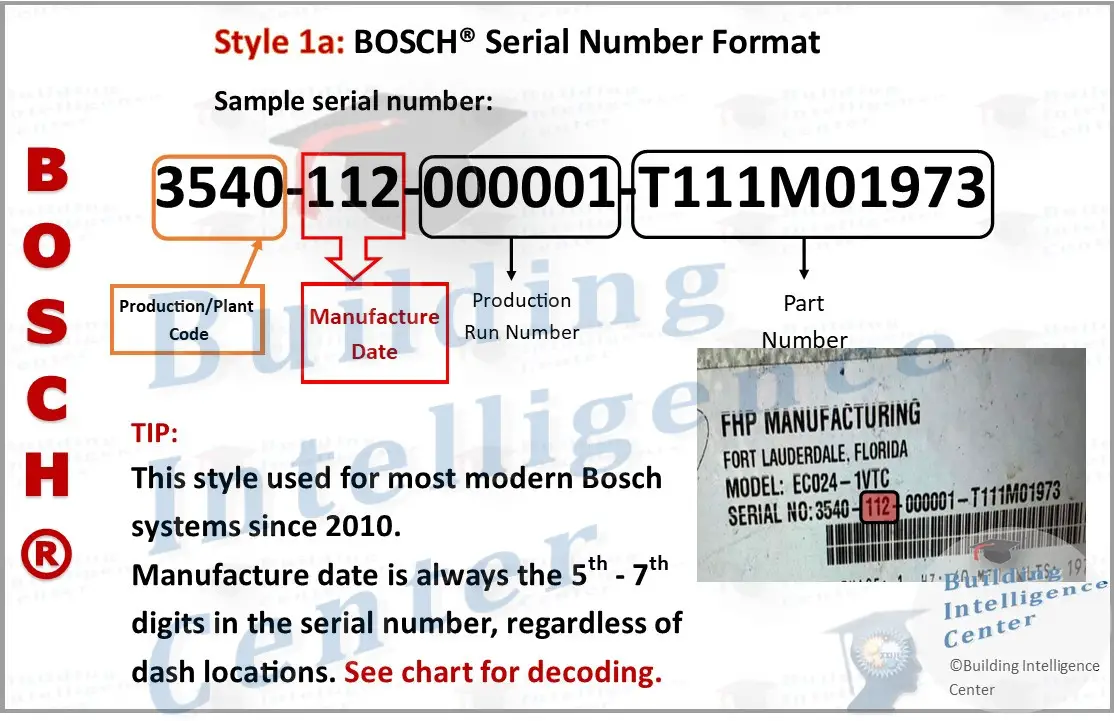
Style 1b: 2940-455-00015-7735003001
Year and Month of manufacture can be determined by using 3-digit code located in the 5th - 7th positions of the serial number combined. (see chart below)
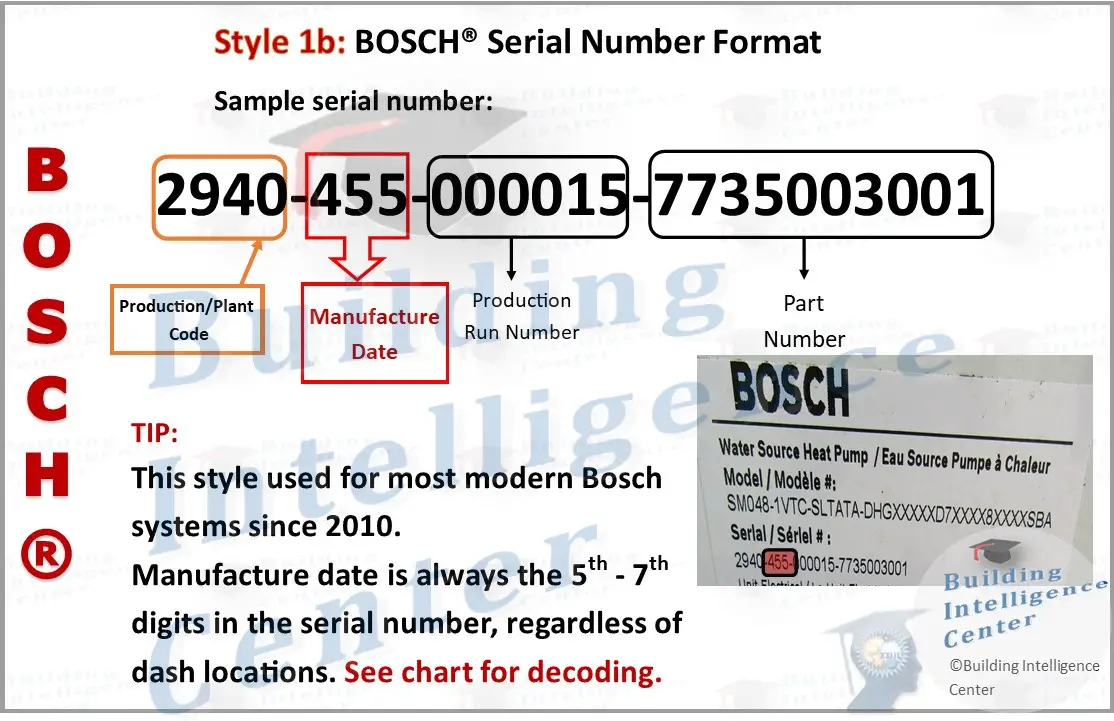
Style 1c: 399A-760-000051-3498752683
Year and Month of manufacture can be determined by using 3-digit code located in the 5th - 7th positions of the serial number combined. (see chart below)
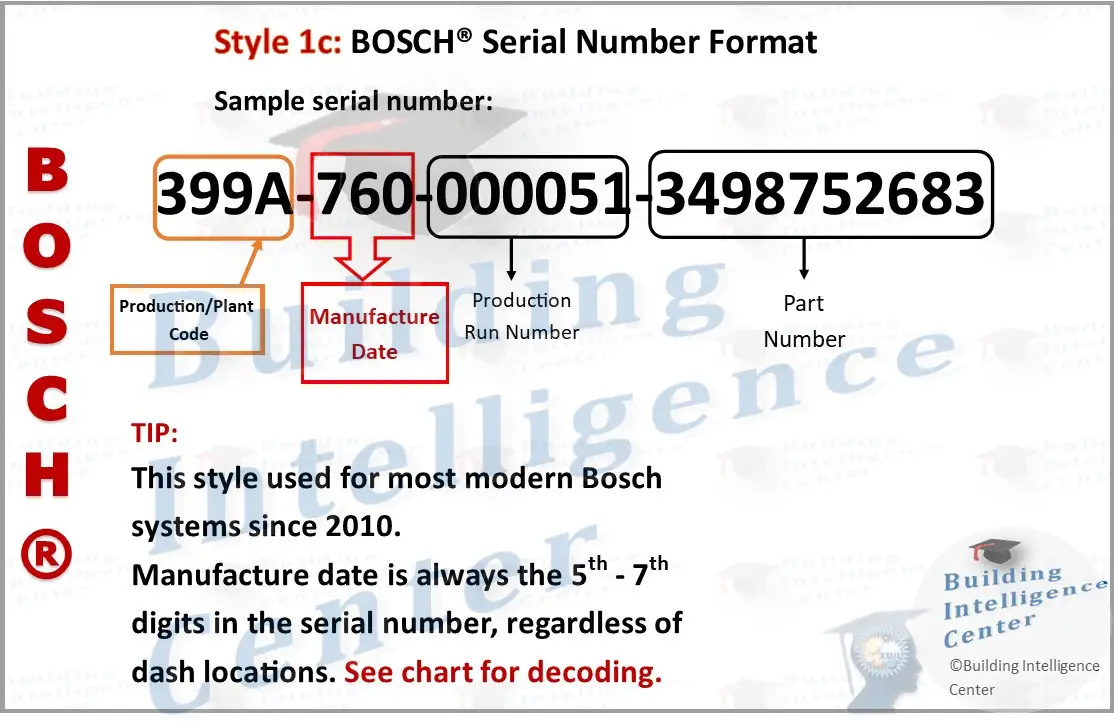
Style 1d: 35201740001328733925719
Year and Month of manufacture can be determined by using 3-digit code located in the 5th - 7th positions of the serial number combined. (see chart below)
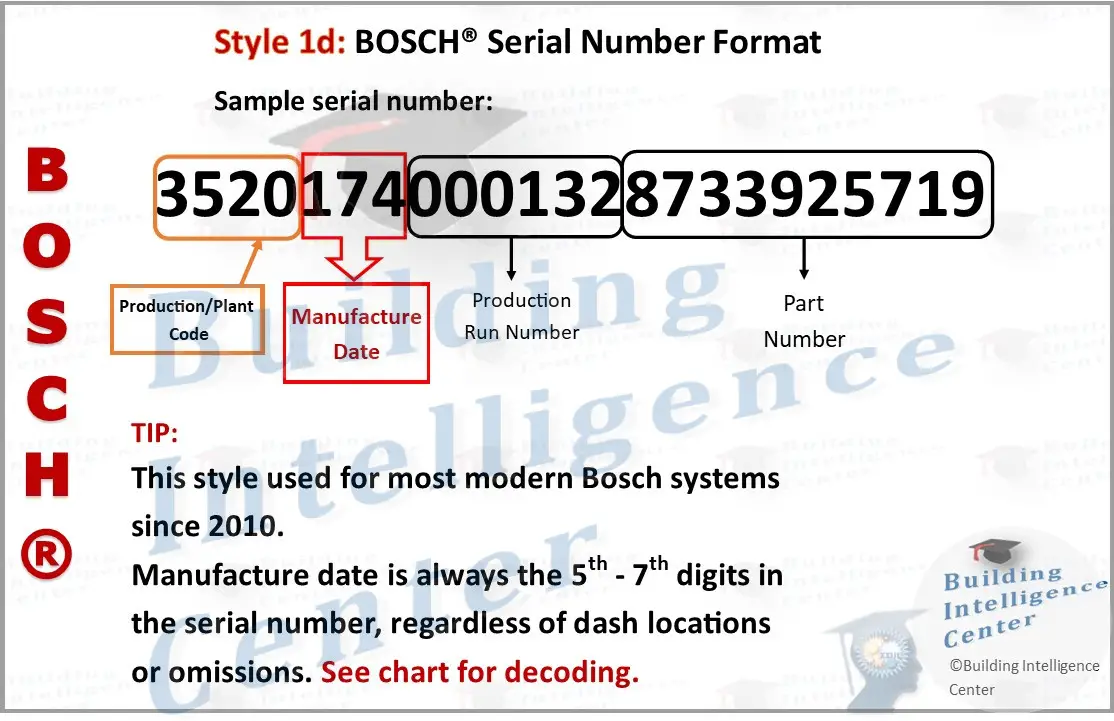
Style 1 Manufacture Date Code Chart:
Year and Month of manufacture can be determined by using 3-digit code located in the 5th - 7th positions of the serial number combined. (see chart below)
This style is used with most current model systems, and has been used since 2010.
The manufacture date is always the 5th-7th combined digits of the serial number regardless of dash locations or omission of the dashes.
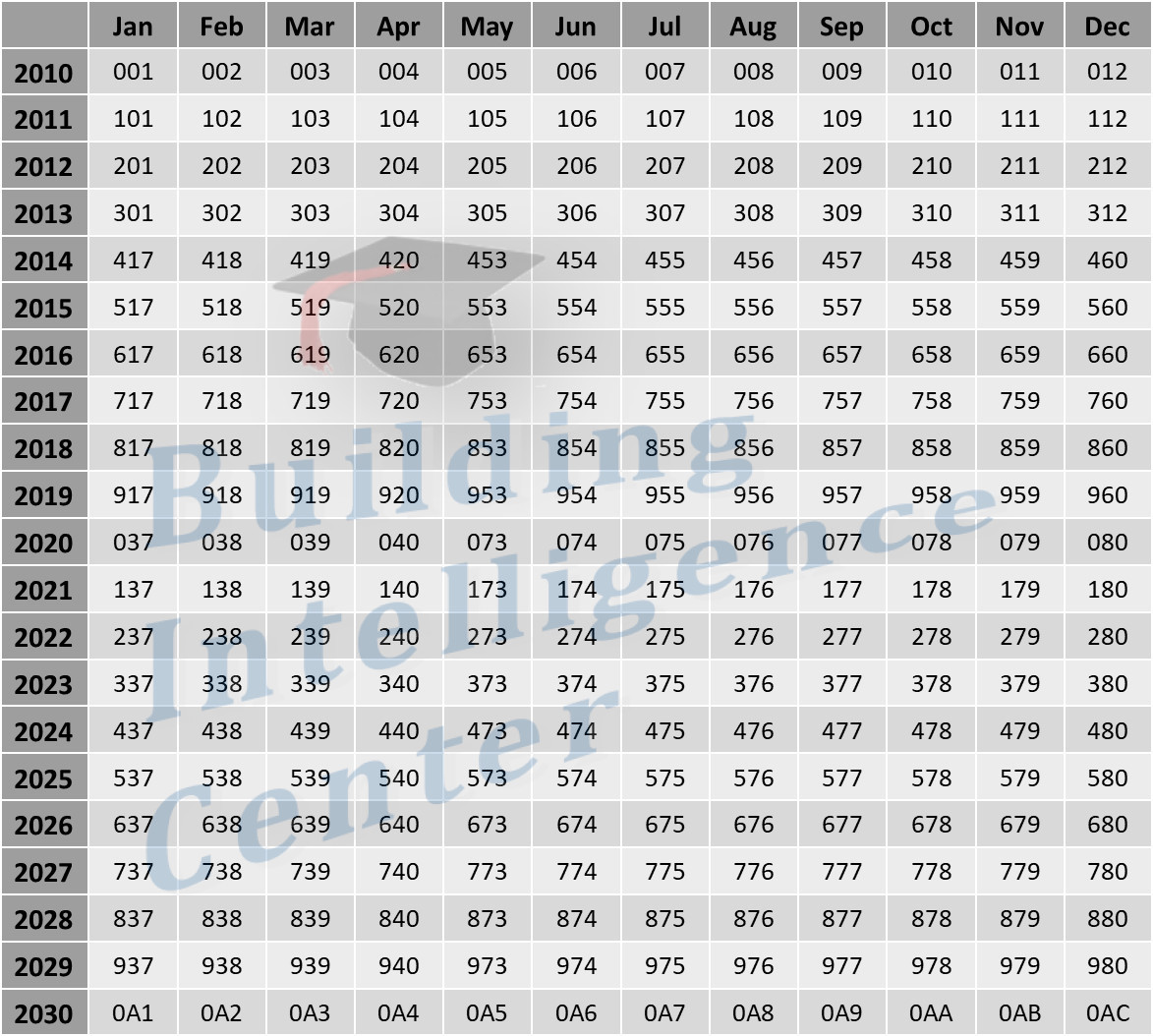
Style 2: 63036333-00-7080-3241
We are currently unable to determine the Year of manufacture from this style serial number.
This style was used with "legacy" model systems (no longer in production or under warranty), and was used prior to 2010.
You may be able to gather further information from Bosch Technical Support
If you have pertinent information to help us complete this style information, please contact us!
Style 3: 253000-08217-01241-7747019703
We are currently unable to determine the Year of manufacture from this style serial number.
This style was used with "legacy" model systems (no longer in production or under warranty), and was used prior to 2010.
You may be able to gather further information from Bosch Technical Support
If you have pertinent information to help us complete this style information, please contact us!
Bosch® History¹
- 1886 - Robert Bosch founded the "Workshop for Precision Mechanics and Electrical Engineering". He was asked to improve upon a magneto ignition device for stationary engines.
- 1897 - Bosch began installing improved magneto ignition devices into automobiles and became the only supplier of a truly reliable ignition.
- 1898 - Founded the first Bosch company outside Germany in London together with the Englishman Frederic Simms. This was the first step onto the global market. Further sales offices quickly followed in other European countries.
- 1901 - Bosch factory constructed.
- 1902 - The chief engineer at Bosch, Gottlob Honold, unveiled the much improved high-voltage magneto ignition system with spark plug. This product paved the way for Bosch to become a world-leading automotive supplier.
- 1912 - Bosch began manufacturing magneto ignition systems at a factory in Springfield, Massachusetts.
- 1926 - Alfred Meyer, then head of Bosch’s patent department, was given the special task of finding new fields of activity for the company. Meyer began developing a safety pilot for gas burners.
- 1929 - Bosch developed a safety gas switch that was capable of activating itself in mere seconds; however, it could not be marketed due to a wide-ranging patent held by the heating and hot-water appliance company Junkers & Co.
- 1932 - After much deliberation and the financial impact of the Great Depression, Hugo Junkers decided to sell his natural-gas appliance division to Bosch. The Junkers trademark name was retained. Junkers was well-known for cost effective and energy efficient gas-fired bath water heaters.
- 1942 - Robert Bosch passes away.
- 1945 - WWII has resulted in most Bosch factories in ruins and near zero international sales. Reconstruction is started along with diversification into more automotive components, home appliances, and HVAC.
- 1950's - Junkers released products such as the Junkers Gasiator, a highly economical gas-fired radiator using its flame failure device for maximum safety - and invented in 1929 by Bosch.
- 1950's - Bosch expands diversification including electronics.
- 1975 - Junkers unveiled a prototype of a heat pump that used groundwater as a heat source.
- 1977 - Buderus markets the Ecomatic low-temperature boiler. The innovative new approach made it possible to link the boiler’s operating temperature to the outdoor temperature, enabling energy savings of up to 30% and setting the standard for an entire industry.
- 1980's - Bosch ventures into telecommunications
- 2001 - Sells most of telecommunication division and acquired industrial technology specialist Mannesmann Rexroth.
- 2003 - Bosch expanded its thermotechnology section with the acquisition of Buderus AG
¹From various industry sources
